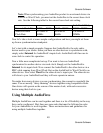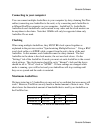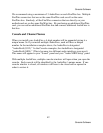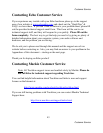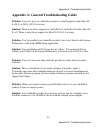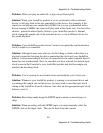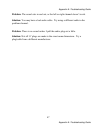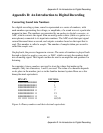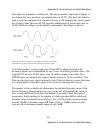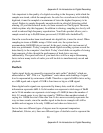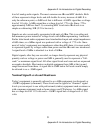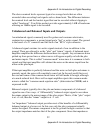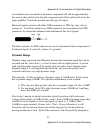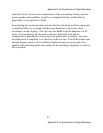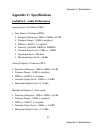
Appendix B: An Introduction to Digital Recording
48
Appendix B: An Introduction to Digital Recording
Appendix B: An Introduction to Digital Recording
Converting Sound into Numbers
In a digital recording system, sound is represented as a series of numbers, with
each number representing the voltage, or amplitude, of a sound wave at a particular
moment in time. The numbers are generated by an analog-to-digital converter, or
ADC, which converts the signal from an analog audio source (such as a guitar or a
microphone) connected to its input into numbers. The ADC reads the input signal
several thousand times a second, and outputs a number based on the input that is
read. This number is called a sample. The number of samples taken per second is
called the sample rate.
On playback, the process happens in reverse: The series of numbers is played back
through a digital-to-analog converter, or DAC, which converts the numbers back
into an analog signal. This signal can then be sent to an amplifier and speakers for
listening.
In computers, binary numbers are used to store the values that make up the
samples. Only two characters, 1 and 0, are used. The value of a character depends
on its place in the number, just as in the familiar decimal system. Here are a few
binary/decimal equivalents:
BINARY
DECIMAL
0000000000000000 0
0000000000000001 1
0000000000000011 3
0000000000000111 7
0000000000001111 15
0000000000011111 31
1111111111111111 65,535
Figure A. Binary numbers and their decimal equivalents



